Georgia has been on my list of places to visit for over ten years. When I was working with Huawei, there was a Georgian restaurant next to the main campus, where we ate every trip. The food, and especially the wine, was amazing, and I became fascinated by the country.
What stood out?
The wine
Unfortunately, I could not do a winery tour or sample as many Georgian wines as I had hoped, but I did have some. Georgian wines have been growing in popularity over the years. Many refer to them as “orange wine,” but they are not made from oranges, so the country’s wine industry is trying to change the name to “amber wines” to remove combustion. The coloration comes from the grapes used and the fermentation and storage in clay pots rather than wood or stainless steel barrels.
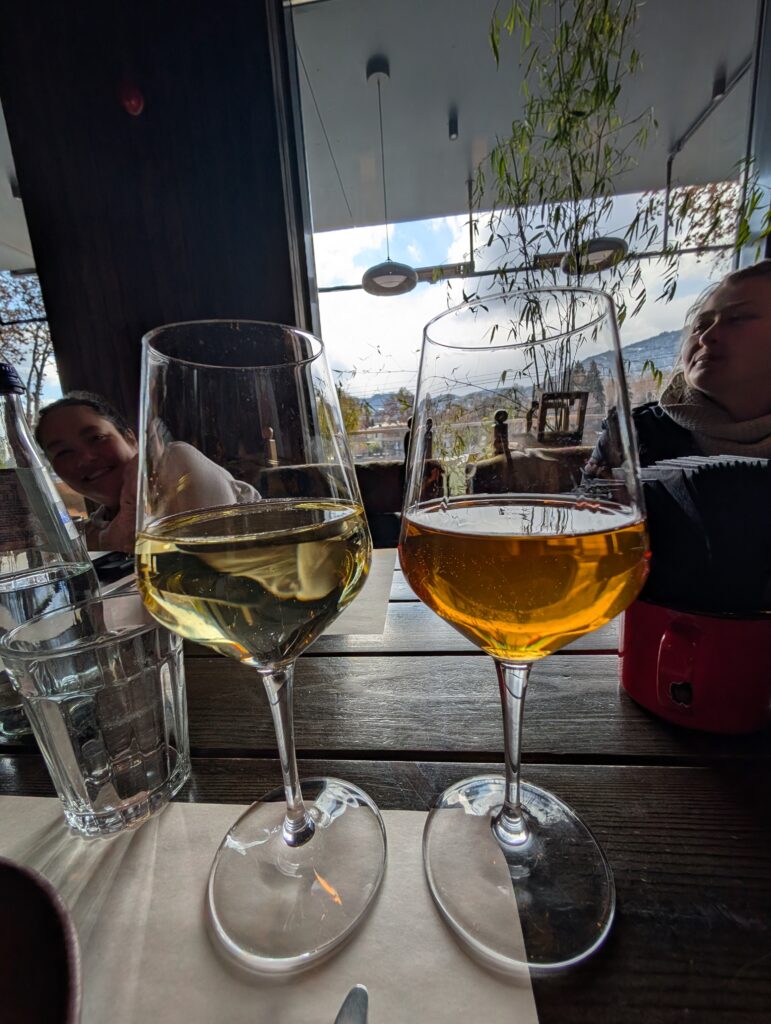
The food – there are examples below but food was amazing. As noted I have had Georgian food many times before. The Khinkali dumplings are very popular with specialty shops all over town.
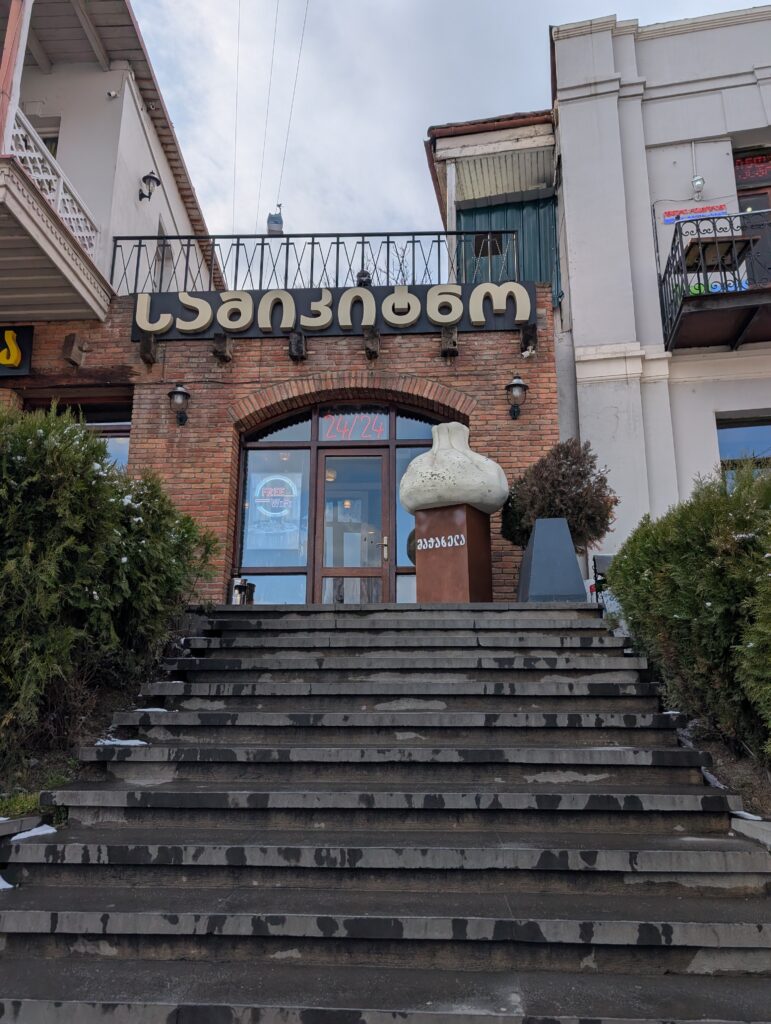
Taking care of stray dogs

many stray dogs lording over city
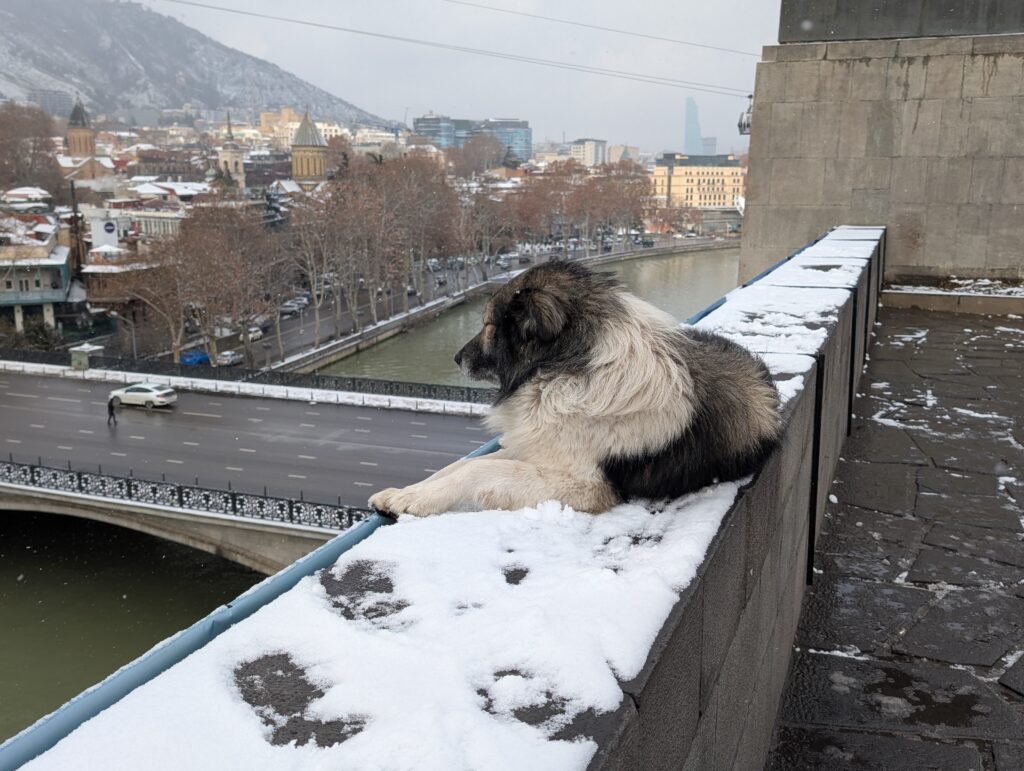
Religious Diversity—From what I had read and what the guide told us, Georgians are accepting of other religions. It’s not easy to see in this photo, but there are multiple denominations of churches, a synagogue, and a mosque, most of which are next to each other. When the Russians took over, they destroyed all churches and religious buildings.
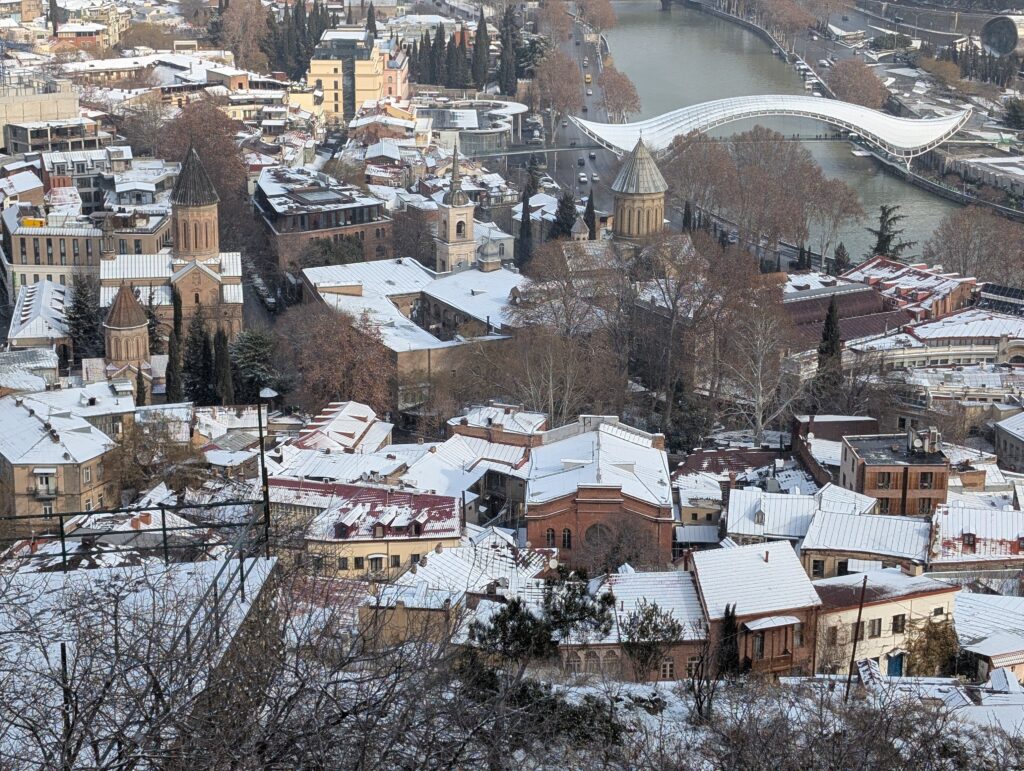
I am fascinated by regional differences and the aesthetics of churches.
The Bazzars—We went through a few of these, and they were a mix of antiques and tourist items. They were underground, spanning the main street in Old Town Tbilisi.
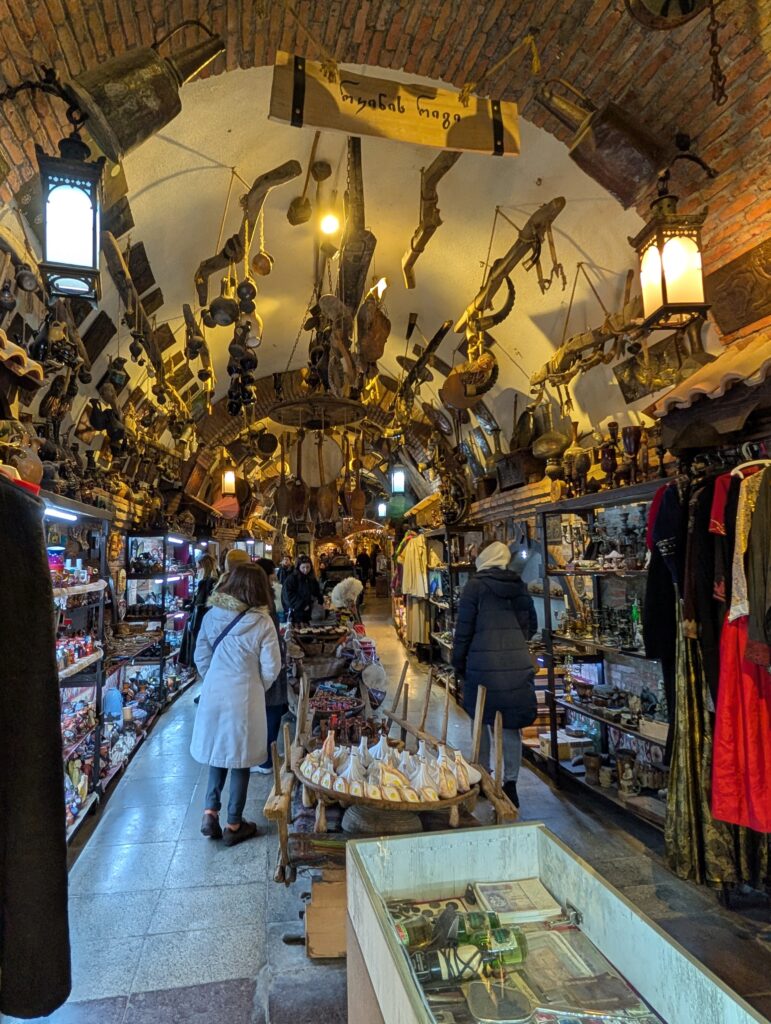
Spices and Fruit-Based Sauces—There were a variety of spices and many types of fruit—and vegetable-based sauces.
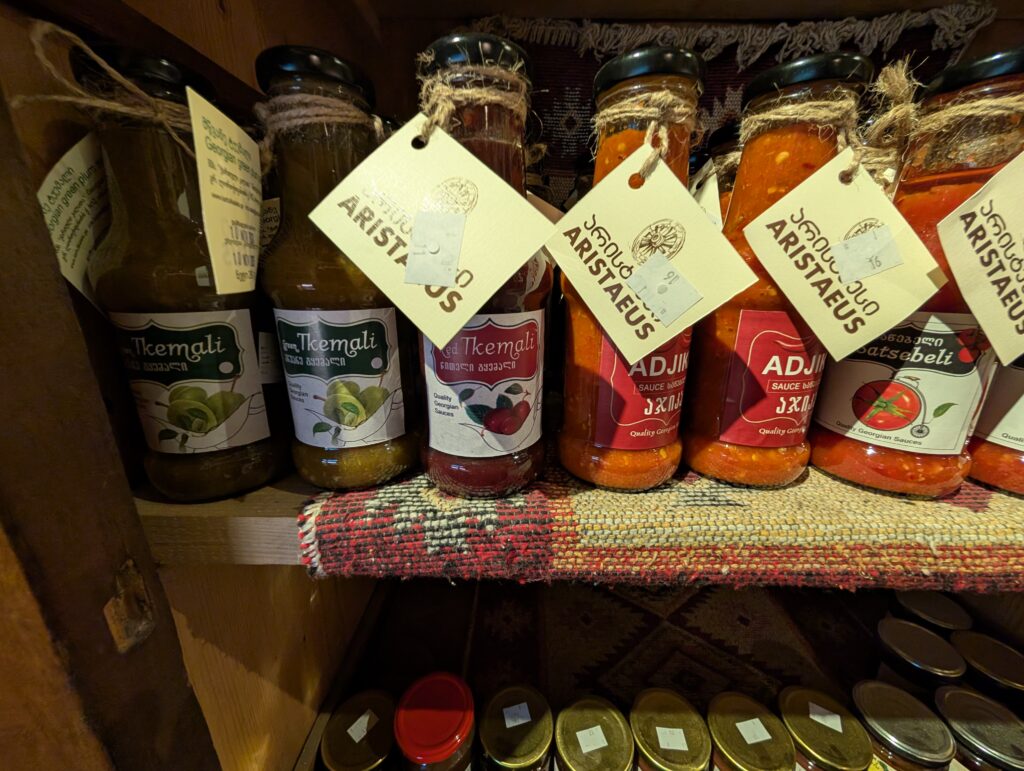
Day 1 – Old Town

Bathhouses – There are a number of them, and this is one of the main ones, adjacent to the old town and the main mosque. It makes sense that they would have a bathhouse, as the legend is that the first ruler found a hot spring and decided to build his castle there. Also, in the Georgian language, Tbilisi means “warm place.” You will see these domes around the area, representing both working and old bathhouses.
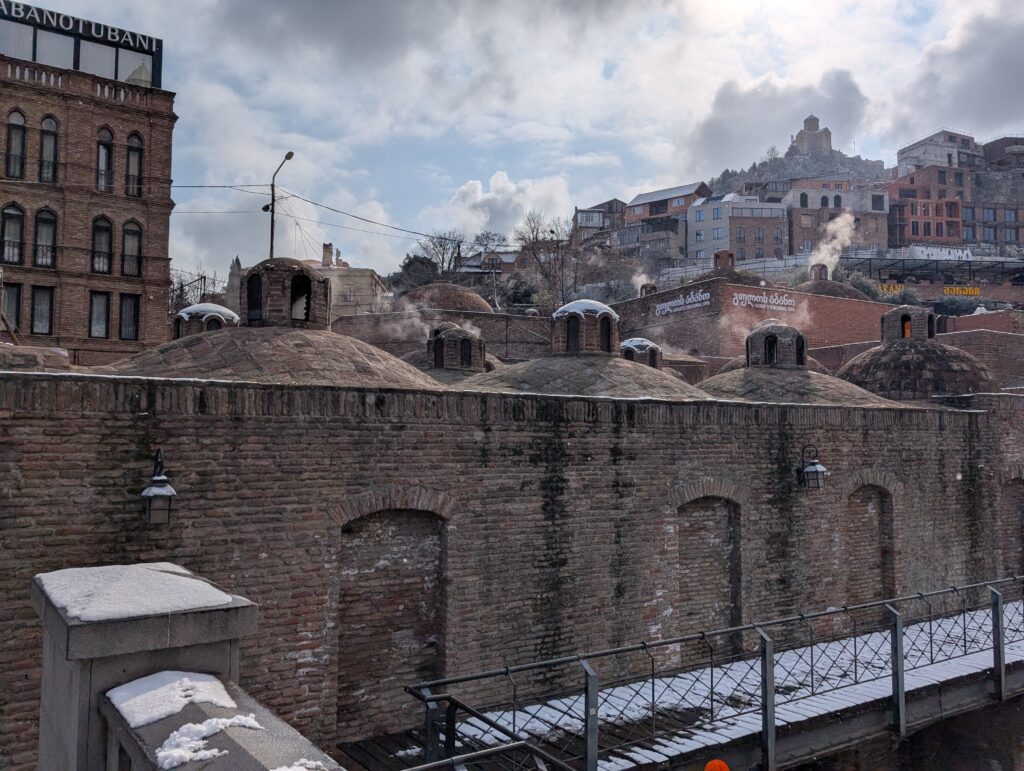
Falcon and Pheasant statue – Near this bathhouse is the Falcon and Pheasant statue that represents the legend of the city. In the 5th century, King Vakhtang I Gorgasali was falcon hunting in the woods. He spotted a pheasant and released the falcon to catch the pheasant. Upon doing so, both fell into the water, which turned out to be a hot spring.
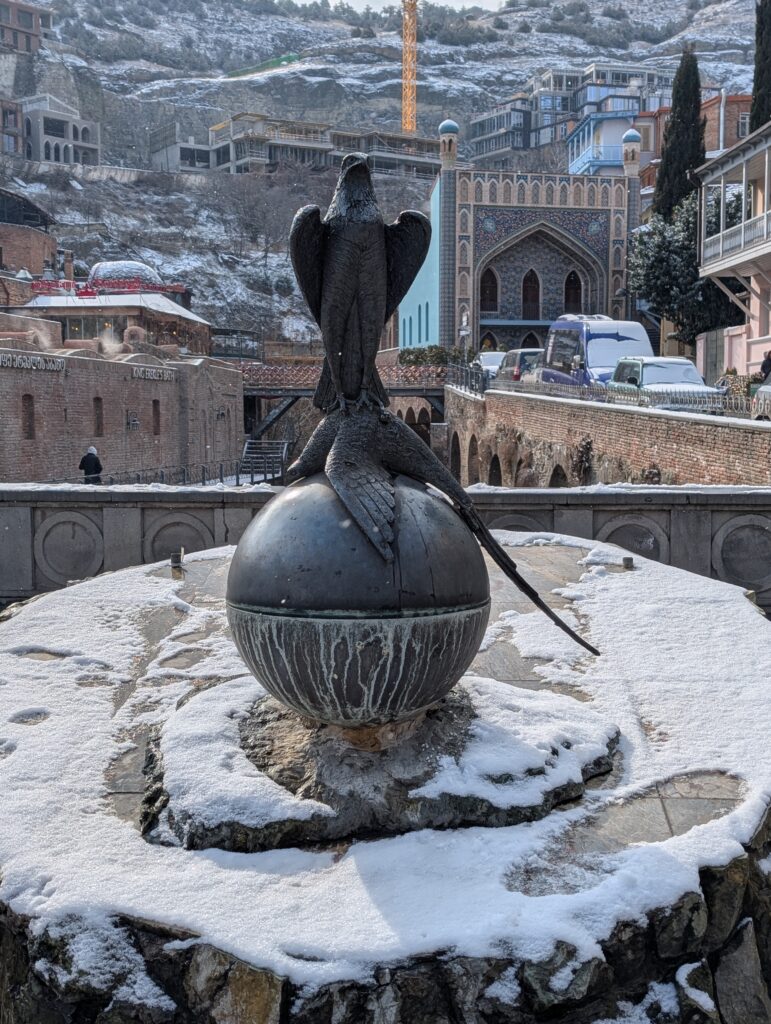
What to Eat in Tbilisi
Due to the quick trip and late arrivals, we only had time for breakfast and lunch, so we tried to make the most of it. The breakfast in the hotel was not as unique as in Baku, but it was a good variety of local fruits, cheeses, and meats.

Lobiani – This traditional dish of tasty bread baked with smashed kidney beans. It was more than we could eat, but ended up being dinner. We arrived late in Armenia, and it was below zero with strong winds and we did not want to leave the hotel so we had this for dinner.
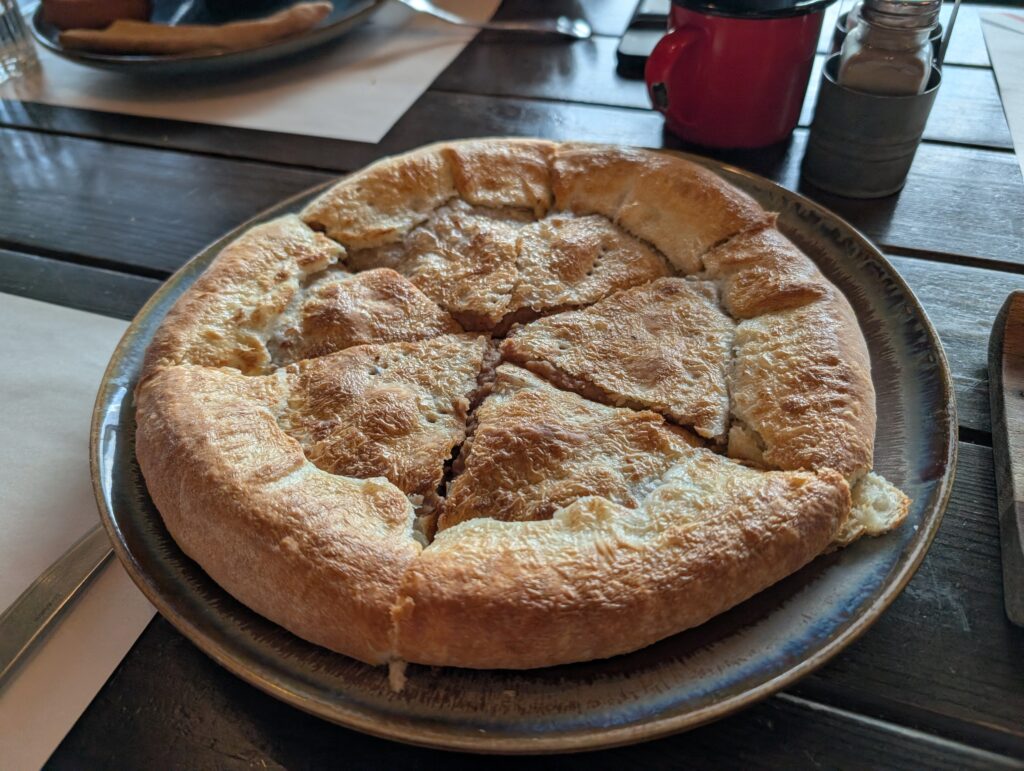
Khinkali dumplings are similar to Chinese soup dumplings. They are very flavourful and can be filled with various meats, cheeses, and vegetables. We opted for the chicken and greens.
